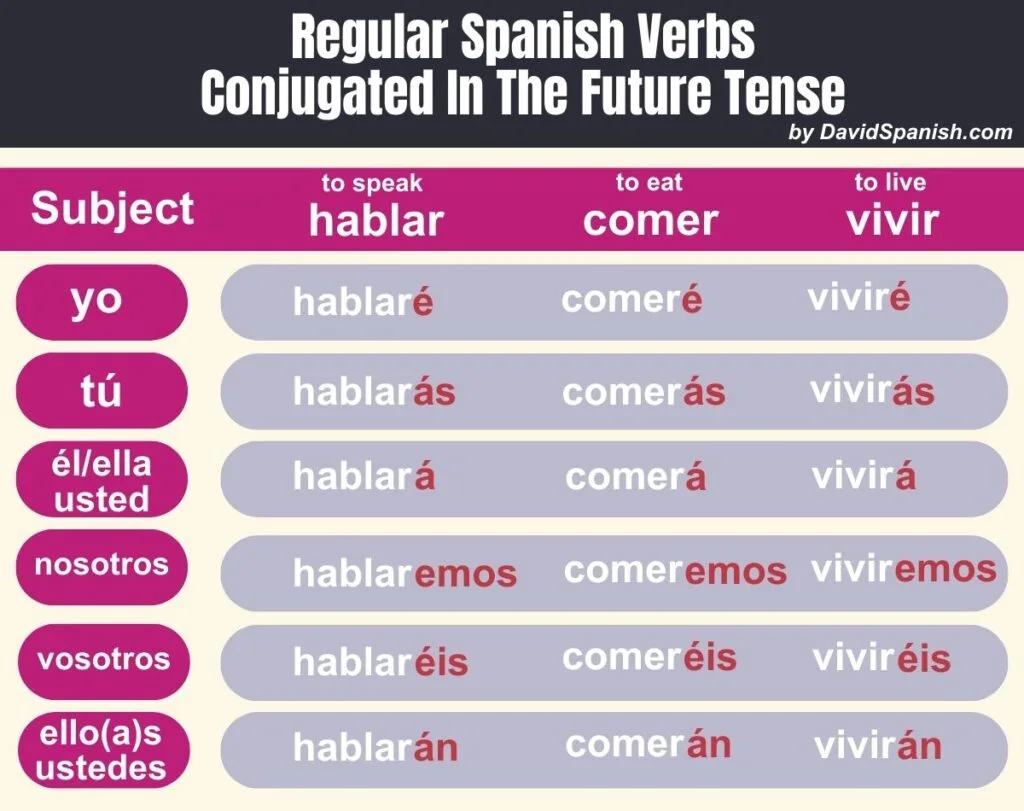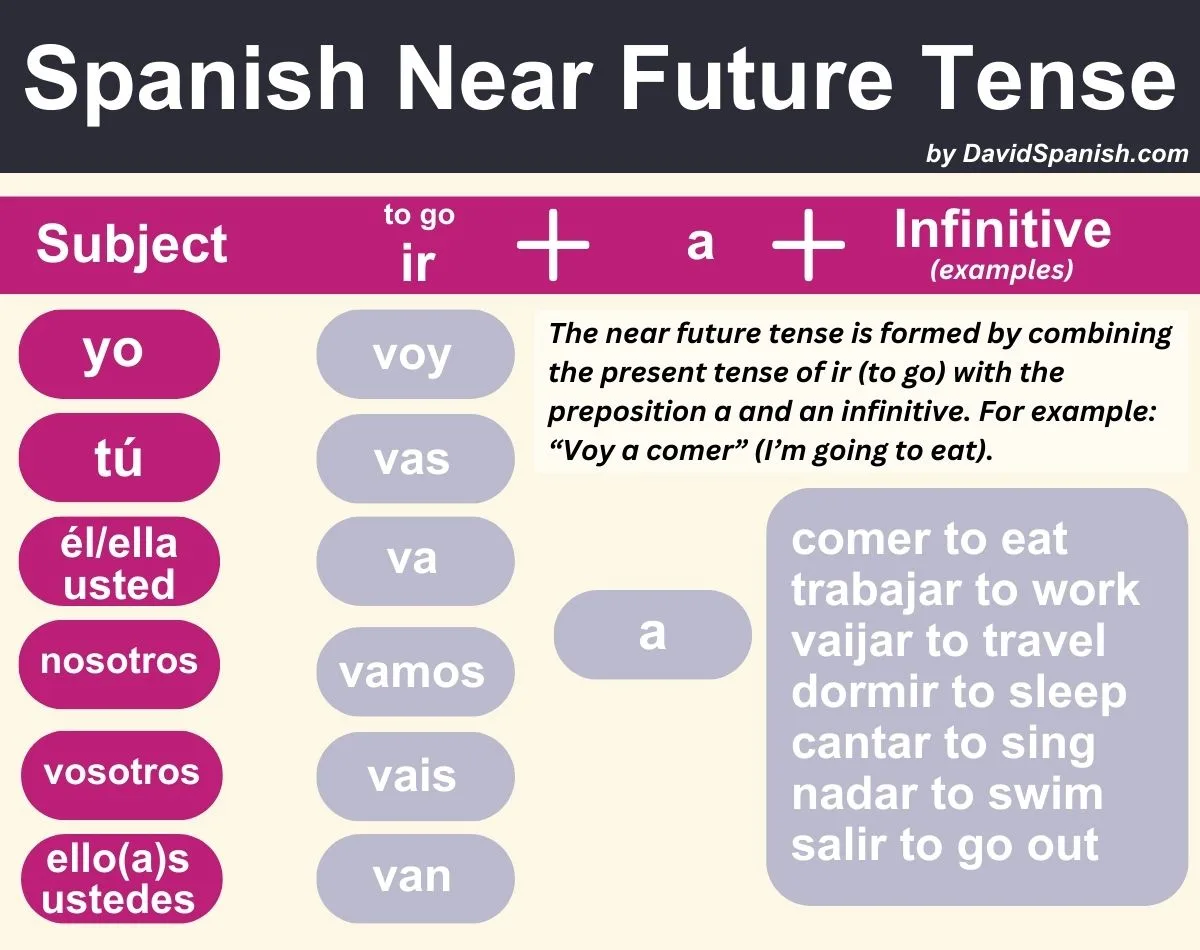What is the Spanish future tense?
In Spanish, the future tense is formed by adding the following endings to the infinitive form of the verb: -é, -ás, -á, -emos, -éis and -án. The future tense equates to “will” in English. For example, yo hablaré (I will speak).
Another future tense called the “near future tense” is formed by combining the present tense of ir (to go) with the preposition a and an infinitive. For example, yo voy a estudiar (I am going to study). Keep reading to master both of these Spanish future tenses!

How to form the Spanish future tense
Regular verbs
The conjugations for the future tense are very straight forward. For regular AR, ER and IR verbs, the endings are the same for all three groups. In fact, these endings are the same for all verbs in the entire Spanish language.

Example sentences
Here are some example sentences of regular verbs in the future tense.
- Yo hablaré con su amigo. I will speak with your friend.
- Viajaremos juntos a Madrid. We’ll travel together to Madrid.
- Ellos trabajarán mañana. They will work tomorrow.
Irregular verbs
Some verbs in Spanish have irregular stems in the future tense. The endings are are the exact same but are added to these shortened or irregular stems.
For the following ER verbs, the ER gets dropped and the endings follow the letter -r.
- caber (to fit) -> cabr (stem) -> yo cabré (I will fit)
- haber (to have) -> habr (stem) -> yo habré (I will have)
- poder (to be able) podr (stem) -> yo podré (I will be able)
- querer (to want) querr (stem) -> yo querré (I will want)
- saber (to know) sabr (stem) -> yo sabré (I will know)
For some ER and IR verbs the vowel at the end of the infinitive gets dropped and is replaced with a -d. Again, the endings are the exact same as all other verbs.
- poner (to put) -> pondr (stem) -> yo pondré (I will put)
- salir (to go out) -> saldr (stem) -> yo saldré (I will go out)
- tener (to have) -> tendr (stem) -> yo tendré (I will have)
- valer (to cost, be worth) -> valdr (stem) -> yo valdré (I’ll be worth)
- venir (to come) -> vendr (stem) -> yo vendré (I will come)
The verbs decir (to say) and hacer (to make, to do) have shortened irregular stems for the future tense. The endings are the same as all other verbs.
- decir (to say) -> dir (stem) -> yo diré (I will say)
- hacer (to make, to do) (yo haré) (I will make, I will do)
Spanish near future tense
In Spanish, you can also use the near future tense to express actions which are going to occur very soon. The near future tense is formed by combining the present tense of ir (to go) with the preposition a (to or at) and an infinitive. For example, yo voy a trabajar (I am going to work).

Here are some example sentences using the near future tense:
- Voy a ir a la playa mañana. I’m going to go to the beach tomorrow.
- ¿Vas a venir conmigo esta noche? Are you going to come with me tonight?
- Él va a hacer su trabajo. He’s going to do his work.
Spanish future tense – conclusion
There you have it! Now you know how to do form the two main future tenses in Spanish. The great news as you’ve seen is that these tenses are not complicated at all. For the the future tense, all verbs get the same endings. For the near future tense, it’s just a matter of memorizing ir (to go) in the present tense.
Discover more:
- La Bamba Meaning, Spanish Lyrics & English Translation - May 4, 2024
- Bésame Mucho Meaning, Spanish Lyrics & English Translation - May 3, 2024
- Querida – Lyrics, Meaning & Translation - May 2, 2024
